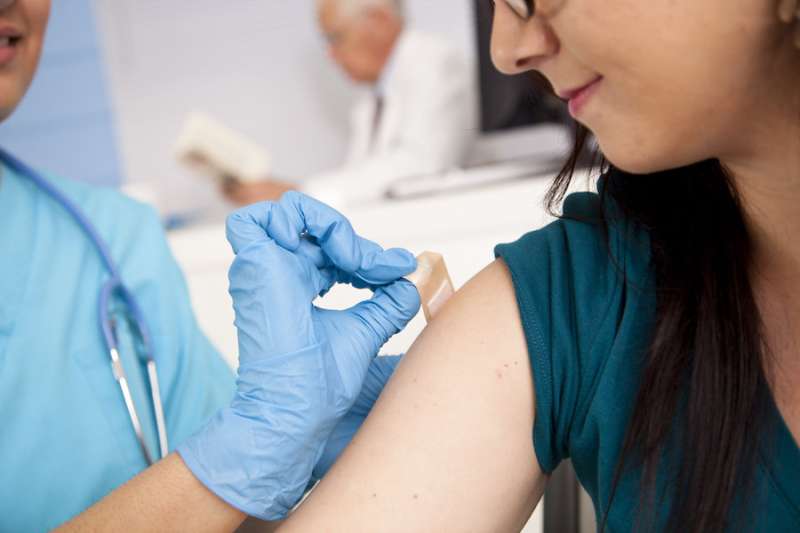Credit: UT Southwestern Medical Center
Mandatory flu vaccines for health care workers improve participation by as much as 30 percent and reduce absenteeism during critical periods of patient surges by about 6 percent, findings from a multi-institutional study show.
Previous work focused on the impact of health care worker vaccination on improving patient outcomes. The findings expand the potential benefits of an institutional policy and help settle previous conflicting data on whether the mandatory policies reduce health care worker absenteeism. As seen this year, health care institutions can struggle to care for surging numbers of patients with influenza when the number of workers available is declining due to illness.
"Studies suggest that higher vaccination rates among health care workers decrease patient mortality and health care associated in?uenza in certain settings," said Dr. Trish Perl, Chief of Infectious Diseases at UT Southwestern Medical Center, and one of the study corresponding authors and overall Principal Investigator. "In addition, absenteeism can pose a serious threat to how effectively a hospital is able to manage the surge of patients during an outbreak. Our study shows that mandatory vaccination policies help maintain better staffing levels and staffing options during those critical surges."
Researchers studied the effects over three separate flu seasons at three institutions with mandatory vaccination policies and four institutions that offered optional vaccination. For all individuals studied (4,000-plus health care workers), vaccination was offered free and on-site.
Researchers found that:
- At mandatory sites, 97 percent, 96 percent and 92 percent of health care workers received vaccinations in the three years studied.
- At nonmandatory sites, 67 percent, 63 percent, and 60 percent of workers were vaccinated over the same period.
- Absenteeism among health care workers was about 6 percent lower at mandatory sites than nonmandatory sites, and the number of days absent also was lower.
- Males, older workers, and those at nonmandatory vaccination sites had longer durations of sick leave.
- Vaccinated health care workers had a 30 percent reduction in absenteeism compared with nonvaccinated health care workers.
"This was a large study across a variety of types of institutions, including pediatric and adult acute care hospitals and VA facilities, which asked whether policies that require employees to get a flu vaccine protected both the employee as well as the institutions," said Dr. Perl, Professor of Internal Medicine who holds the Jay P. Sanford Professorship in Infectious Diseases.
The study, which appears in the journal Infection Control and Hospital Epidemiology, didn't look specifically at whether higher rates of vaccination of health care workers reduced infections among patients, but previous studies have shown that this is true, especially among the most vulnerable patient populations.
The Healthy People collaborative in the U.S. has a goal of 90 percent vaccination rates among health care workers by 2020. The study suggests that goal will be difficult to achieve with only voluntary policies, said Dr. Perl.
More information: John Frederick et al, Protecting Healthcare Personnel in Outpatient Settings: The Influence of Mandatory Versus Nonmandatory Influenza Vaccination Policies on Workplace Absenteeism During Multiple Respiratory Virus Seasons, Infection Control & Hospital Epidemiology (2018). DOI: 10.1017/ice.2018.9
Journal information: Infection Control and Hospital Epidemiology
Provided by UT Southwestern Medical Center





















